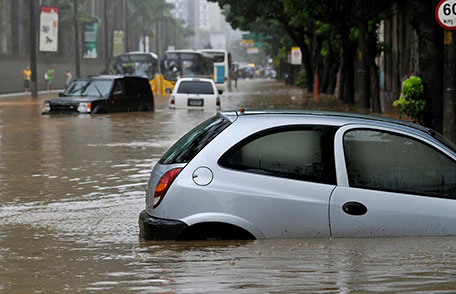Natural Disaster
By Sukhmandeep Kaur
Mitigation Strategies
Millions of people worldwide are exposed to an environment that is
becoming more and more multi-hazardous, which emphasizes the
significance of ensuring that populations are becoming more and more
prepared.
The strategies that are made to decrease the risk of disaster on the
people are called mitigation strategies. These include various things:
Some kind of hard bridges are designed to withstand the earthquakes and
other natural disasters.
- Buying the flood insurance to secure your belongings.
- Having water heaters and shelves ready to the near walls.
Globally, there are several institutions and systems devoted to human
and societal development. The word "sustainability" is essential to all
of the various strategies. The goal of development policy is "to reach
sustainable human development," despite the fact that there are many
distinct ideas, tactics, and tools in use
Sustainability requires a comprehensive strategy that addresses the
interrelationships between the environmental and social elements. They
discuss the "Vanua Concept" of the Fiji Islands, which holds that
people, land, and water are all considered to be one. As of right now,
they claim that resource management is only defined from an economic,
scientific, and technological perspective First, according to the United
Nations Charter, each country has a duty to ensure the welfare of its
citizens.
In the meanwhile, this idea has been included in all fundamental
legislation around the globe. The Stafford Act Disaster Relief and
Emergency Assistance ACT ("Stafford Act") of 1974 establishes the
Natural Hazard Mitigation policy in the United States (FEMA 2007). The
main aim is to give state and local government’s consistent, orderly
federal support as they fulfill their obligations to lessen the harm and
suffering brought on by natural disasters.
Ten principles, among others, are outlined below to help states and local governments plan for and execute mitigation:
- Preventive actions can lessen the effects and expenses of disasters.
- The foundations of mitigation are risk assessment and hazard
identification.
- Both preventative and remedial actions are part of risk reduction.
- All mitigation takes place locally.
- Individuals who consciously decide to live in locations vulnerable to
hazards must take accountability for their decision.
The Stafford Act states that when a local movement requests a "presidential
emergency declaration," the national government may provide financial
and technical support if it feels that its response capability is being
overburdened. A hazard mitigation strategy must, at the very least,
include:
- An assessment of the many kinds of natural hazards
- An explanation and evaluation of the local programs for any kind of disaster management and their capacity for local reduction
